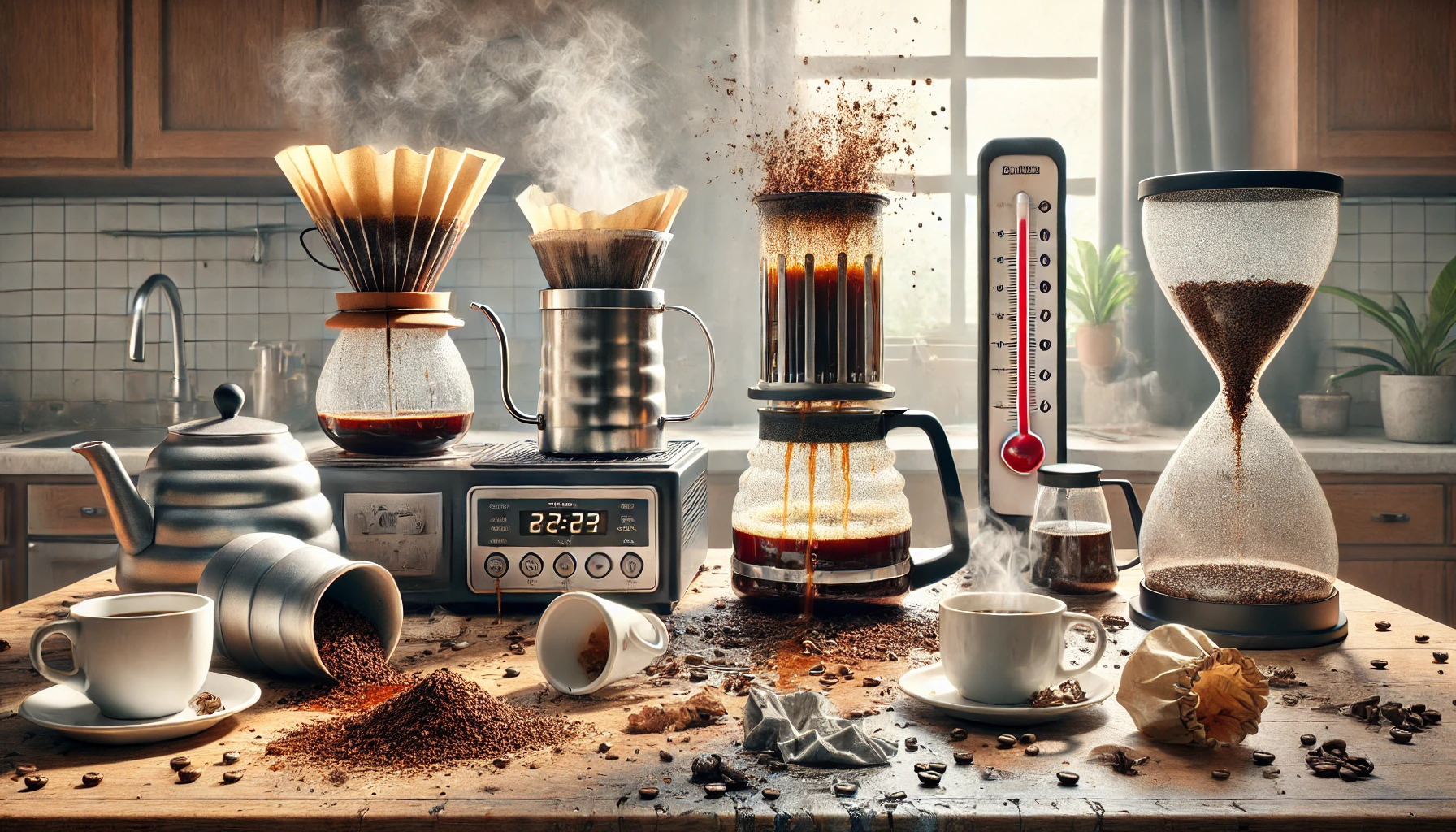Brewing coffee at home can be a rewarding ritual—but even small missteps can turn your cup from delicious to disappointing. Whether you’re using a French press, pour-over, or drip machine, understanding the most common mistakes can help you get the most flavor out of every bean.
In this article, we’ll walk through the 10 most common coffee brewing mistakes and how to fix them, so you can enjoy better, more consistent coffee every day.
1. Using Stale or Old Beans
The mistake: Using beans that are months past their roast date.
Why it matters: Coffee starts losing flavor and aroma just 2–3 weeks after roasting. Old beans produce flat, lifeless brews.
The fix: Buy freshly roasted whole beans in small batches. Check the roast date on the bag and aim to use them within 2–4 weeks of that date.
2. Grinding Too Early
The mistake: Grinding beans in advance.
Why it matters: Ground coffee stales quickly due to oxidation. Within 15–30 minutes, it begins losing key aromas and oils.
The fix: Grind just before brewing for maximum freshness and flavor. Invest in a burr grinder for consistent results.
3. Using the Wrong Grind Size
The mistake: Using one grind for every brew method.
Why it matters: Different brewing methods require different grind sizes for proper extraction. The wrong grind can lead to sour or bitter coffee.
The fix: Match grind size to your method:
- French press: coarse
- Pour-over: medium
- Espresso: fine
- Aeropress: medium-fine
- Moka pot: fine
4. Incorrect Water Temperature
The mistake: Using boiling or lukewarm water.
Why it matters: Water that’s too hot can scorch the coffee, while water that’s too cool under-extracts.
The fix: Use water between 90–96°C (195–205°F). Let boiling water sit for 30 seconds before pouring if you don’t have a kettle with temperature control.
5. Wrong Coffee-to-Water Ratio
The mistake: Guessing how much coffee to use.
Why it matters: Too much coffee can make it overly strong and bitter; too little makes it weak and sour.
The fix: Use a digital scale and aim for a 1:15 to 1:17 coffee-to-water ratio (e.g., 20g coffee to 300ml water). Adjust to your taste from there.
6. Poor Water Quality
The mistake: Brewing with tap water full of chlorine or minerals.
Why it matters: Coffee is 98% water. Bad water = bad coffee.
The fix: Use filtered water for cleaner taste and better extraction. Avoid distilled water, as it lacks the minerals needed for balance.
7. Not Cleaning Equipment Regularly
The mistake: Letting oils, grounds, or mineral buildup stay in your gear.
Why it matters: Dirty equipment taints the flavor of your brew and shortens the life of your tools.
The fix: Clean your brewer and grinder weekly, and descale machines monthly. Use mild soap and rinse thoroughly.
8. Rushing the Brew Time
The mistake: Pouring or plunging too fast.
Why it matters: Brew time affects extraction. Too fast = sour. Too slow = bitter.
The fix: Follow recommended brew times:
- French press: 4–5 minutes
- Pour-over: 2:30–3:30 minutes
- Espresso: 25–30 seconds
- Aeropress: 1:30–2 minutes
Use a timer to stay consistent.
9. Skipping the Bloom
The mistake: Pouring all water at once during pour-over or French press.
Why it matters: Fresh coffee releases carbon dioxide when first hit with water. Skipping the bloom leads to uneven extraction.
The fix: Wet the grounds with a small amount of hot water, wait 30–45 seconds to let them “bloom,” then continue brewing.
10. Ignoring Your Taste
The mistake: Relying on recipes without adjusting for your own preference.
Why it matters: Coffee is personal. What tastes perfect to someone else might not suit your palate.
The fix: Taste your coffee mindfully. If it’s too bitter, grind coarser or use less coffee. If it’s too sour, grind finer or increase brew time. Keep notes and experiment.
Final Thoughts: Brew Smarter, Sip Better
Avoiding these common mistakes can elevate your home brewing game immediately. Great coffee isn’t about expensive gear—it’s about understanding how each variable affects your cup.
With a little attention to detail and a willingness to adjust, you can transform every cup into a café-worthy experience—right from your kitchen.
